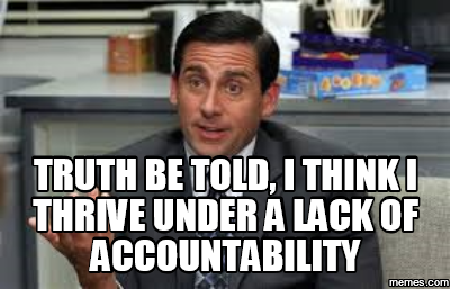 Extreme responses maintain status quo Extreme responses maintain status quo There are many responses to dysfunction, many of them perpetuate malfunctions rather than address the underlying issues. On one extreme a dysfunction is spotted and the manifestation of that ill becomes the crusade of a segment of people who mount their high horses to rid the world of that threat. The opposite end of the spectrum is a concerted effort to sympathize with the ill and normalize it to the point where there is no effort to address the item. Unfortunately we have become a society of extremes more often than we have chosen to be objective about narrowing down root causes for dysfunction and collaborating to identify solutions. This is glaringly obvious in politics but it is the modus operandi for individuals, families and businesses as well. By taking a peek at how we treat drug related issues we can learn something about our approaches to dysfunction in our personal and professional lives as well. Dr. Carl Hart, a Columbia University neuroscientist, has interwoven his own personal experiences with and around drugs combined with his research particularly in the areas of crack cocaine and methamphetamines to attempt to provide sound advice in the attempt to address drug use theology in America. Drug abuse is a dysfunction in American society, and in the world, yet the manner in which we have chosen to address this sickness has predominantly led to expanding that dysfunction rather than curing it. Canadian physician Gabor Mate has made the alarming observation, “If I had to design a system that was intended to keep people addicted, I’d design the system [of criminalization] that we have right now. To create a system where you ostracize and marginalize and criminalize people, and force them to live in poverty with disease, you are basically guaranteeing they will stay at it (Hari, 2015, p.166).” Dr. Carl Hart approaches this topic from a few key standpoints that are unique to his position: he first speaks as one who grew up in poverty and was able to connect with some positive influences who helped him shape his life out of the cycle of impoverishment and addiction; secondly he speaks as a neuroscientist who has dedicated his life and studies to the causes and treatments for drug addiction; and finally, he approaches this topic as a father who discovered he had a son who was struggling with the same issues he has been addressing in his own experience as well as his professional life. Speaking on drug policies and approaches, Carl notes, “Much of what has gone wrong in the way we deal with drugs is related to confusing cause and effect, to blaming drugs for the effects of drug policy, poverty, institutional racism, and many other less immediately obvious factors.” Of particular interest to Dr. Hart, as well as many others working in this field of study, are the conventional methods of testing drug theories using rats in isolated scenarios. I found it interesting that simply by asking the question as to whether the structure of the prior experiments such as Rat Park were rooted in short sighted scenarios that did not account for the factors of life. In the 1970’s experiments were conducted where rats left alone were more likely to choose drugs than rats who were in a community with options other than drugs. Conducting his own experiments, Dr. Hart sought out persons who fit the criteria of DSM addiction, offering them small amounts of money to make a choice between drugs and an alternative. “They didn’t fit the caricature of the drug addict who can’t stop once he gets a taste,” Dr. Hart said. “When they were given an alternative to crack, they made rational economic decisions.” It is interesting to note that the day before Dr. Martin Luther King Jr. was assassinated he made his now infamous speech, “I have been to the mountaintop”, which continued a shift in tone and content of his emphasis from racial equality as a solo issue to the broader context of poverty. In one part of that speech, MLK Jr. states, “Another reason that I'm happy to live in this period is that we have been forced to a point where we are going to have to grapple with the problems that men have been trying to grapple with through history, but the demands didn't force them to do it. Survival demands that we grapple with them.” Dr. King was addressing injustice as a universal issue and the specific context applied to the treatment of Memphis sanitation workers. When we claim high ideals those concepts meet the pavement in how we treat those in positions often unseen yet critical to a local operation. Unfortunately, we have continually chosen with our rhetoric, policies and enforcement approaches to maintain the status quo rather than make significant changes towards addressing root causes of dysfunction at the local as well as the national level. We can see this in politics, we can see this in criminal justice reform but these same threads exist in our personal lives, our families and our organizations. Is this leadership? Dr. Hart makes the point that the main disparity is in how we approach the dysfunction of our drug dogma, that the cost of our war on drugs has been so much higher than investing in treatment and has been significantly ineffective in treating the core causes of the ill of drug addiction. In an interview with the New York Times, Dr. Hart is asked what he would say to those who preach “Just Say No” as a valid response to the drug issue and believe The War on Drugs is a salient approach to addressing the root causes. Carl responds, “Probably nothing. Those people are so detached. I mean, really, they are clueless. If politicians did care about their constituents, they would work harder to seek out people like me. They don’t (Chozik, 2014).” Many that I have discussed these topics with are in either camp of extremes mentioned in the opening of this writing, either there is an ongoing crusade to carry on the legacy of Ronald Raegan or there is an permissive dissonance with the reality that drug addiction is an issue. Positioned in the middle are those who are tired of the noise which either leads them to tune out or to dig in and put their energies to work for local creative solutions. It seems the loudest voices are in those extremes and they are given the broadest media platform as well, but there is beautiful work being done by many who are quietly going about their business in making the world a better place. Where dysfunction is noted in an organization, and to be sure all teams have some level of malfunction, the lesson here is that objective approaches rooted in science can provide insights into creative solutions. To make a difference we have to face some hard truths and be willing to allow the evidence to take us through to a solution rather than hide in the shadows of the status quo or take our expected positions in the tunnel vision of the extremes. References: Hari, J. (2015). Chasing the scream: The first and last days of the war on drugs (First U.S. edition.). New York, New York: Bloomsbury. Rev, T., & JR., M. L. (n.d.). Martin Luther King's Final Speech: 'I've Been to the Mountaintop' -- The Full Text. Retrieved November 18, 2017, from http://abcnews.go.com/Politics/martin-luther-kings-final-speech-ive-mountaintop-full/story?id=18872817 Chozik, A. (June 27, 2014). Carl Hart: ‘Crack wasn’t the real problem’. New York Times Magazine. Retrieved from https://www.nytimes.com/2014/06/29/magazine/carl-hart-crack-wasnt-the-real-problem.html
0 Comments
 Always be learning, author's daughter reads article published in FM World Mag Always be learning, author's daughter reads article published in FM World Mag In any profession it is essential that local professionals work to achieve The Three C's - connect, collaborate and conquer. We are stronger together and no one knows that better than either those who are connected with a caring community of like minded professionals or those who are pulling their hair out trying to figure it all out on their own. Through founding and facilitating the Eugene, Oregon based Local Facilities Manager's Connection (LFMC) we have had the pleasure of connecting with local professionals, collaborating with industry leaders such as FM World / BIFM (see article) and working to combine these resources to conquer in our respective roles. Take a peek at this article published in the FM World Magazine in April of 2017 which grabs some lessons learned as well as best practices from criminal justice and applies those to facilities management - A Bit of RNR: What FM Can Learn From Probation. Applying risk, needs and responsivity (RNR) best practices for reducing recurring bad behavior (aka recidivism) to become predictive and proactive as a leader in an office context.
By Jon Isaacson In the world of criminal justice, probation is the most commonly utilized sanction for both offenders in jail as well as those in prison. It is a rather staggering statistic to know that nearly 1 in 60 U.S. adult residents are on probation (Allen, et al., 2016, p.101), as currently there are 4.1 million offenders on probation and 780,000 offenders on parole. Probation is a means from which an offender can remain under supervision by the criminal justice system without being incarcerated, or so the theory goes. While the reasons for probation are many, some of the most discussed include cost effectiveness, overcrowding and theories related to best practices. To the cynic we release offenders from incarceration because we are soft, it costs less and we just don’t have the room, to the idealist we remove offenders from the institution so that we can rehabilitate them. Why are we talking about probation in a business context? If offenders on probation are those individuals who have been deemed fit to reintegrate into society but whom still require supervision as well as resources to fully transform into trustworthy productive contributors to their community, there are many potential correlations to an organizational framework in the business world. Wise leaders understand that not every employee who fails should be fired, fined or demoted – the harshest of sanctions within the business world - but many require further supervision and training to be restored to prior responsibilities or to reduce the chance of repeat mistakes in the same areas. In the realm of jurisprudence the term is known as recidivism which is a fancy word for that natural human habit of criminals cyclically returning to their illegal behavior following release from incarceration or sanctions including probation. In business, we too want to prevent recidivism, we want to be proactive so that we do not keep making the same mistakes over and over again or like the criminal justice world we will be in a continuous negative cycle of behavior that can cost time, money, resources or even lives. Probation practices are relevant to business practices because recidivism affects both. Principles for effective intervention have long been the pursuit in devising best practices for probation in order to address both cognitive and behavioral based issues while assisting individuals to make positive predictive as well as proactive changes in their wayward lives. This is not unlike a business scenario where something has gone awry, an issue has been addressed, consequences have been laid out and now it is time to re-establish a team member into the organization and renew the bonds within a team that were affected by negative actions. Criminal justice would divide an individual’s needs into risks, needs and responsivity (RNR) as a model for how to devise interventions that will be most effective for productive reintegration. Identifying the attitudes, behaviors and needs that should be targeted to effect change is good practice for working with offenders in the legal system but is also good business sense for leaders within a business framework dealing with interpersonal dynamics that can negatively affect cohesiveness within the organization. The RNR model is based in psychology demonstrating that targeting criminogenic risks and needs in a calculated manner is much more effective than unstructured or vague clinical approaches (Lutze, 2014, p.108). How many businesses also chase their tails with unstructured disciplinary practices and vague team building approaches? So what can we learn from the risk, needs and responsivity approach that may help our organizations predictively as well as proactively build employee engagement even when the actions are disciplinary in nature? The risk principle includes utilizing proven risk assessment tools to predictively identify levels of risk for repeating negative actions. Similar to criminal justice, when tools are sought by management care must be taken to ensure that the tool itself is not so cumbersome with administrative tasks that it becomes a full time job just to enter data for the assessment. There is a sweet spot with assessment tools, which for most businesses may be some sort of personality profile, must be user friendly, adaptive and resource effective especially in consideration for time management. These assessments should incorporate feedback from bottom up so that the vision is clear and the implementation is effective for the whole organization. In the criminal justice world a properly administered risk assessment will enable risk prediction, identification of level of risk and will direct proactive treatment intensity. For business, the right assessment tools can enable an organization to prepare managers, employees and prospects for understanding communication styles as well as create guidelines for effective team development. What tools can we use to attempt to identify points of friction prior to their occurrence? The most commonly utilized risk assessment tool within criminal justice circles is the Level of Service Inventory-Revised (LSI-R) which assess offender risk by examining 10 domains including criminal history, companions, emotional problems, attitudes and orientation (Allen et al, p.106). This tool helps judges (ie executive level management) and probation departments (middle management) to make better predictive as well as proactive decisions regarding fitness for probation (hiring), supervision levels and what type of services are needed. In the business world there are so many personality and profile tests available, if you already have one in use then commit to that, if you do not have one you may consider its value for the same reasons LSI-R is utilized. As noted by author Lex Sisney, many of the tools utilized by business were created mid-last-century and do not allow predictive understanding or proactive management, “To get a complete picture of the total team makeup and predict it’s performance in advance – as well as what adjustments to make when things get off track.” In his book Organizational Physics, Mr. Sisney proposes what he has titled the PSIU framework which categorizes individuals into Producers, Stabalizers, Innovators and Unifiers as a framework for effective team building and development. The need principle directs efforts toward those dynamic risk factors that are changeable as well as criminogenic needs, or those factors that contribute to offending such as antisocial personality or hanging with the wrong crowd. What is referred to as risks in criminal justice might better be understood in the business context as those factors which contribute to The Three D’s of Dysfunction, Disruption or Disorder. As leaders we need to need to identify those ingredients that will lead to the manifestation of The Three D’s when we are hiring new employees, dealing with interpersonal dynamics and making key decisions as an organization. Understanding and effectively addressing needs is key for probation officers as well as management practitioners. Best practices within criminal justice have been recognized under Effective Practices in Community Supervision (EPICS) developed by researchers at the Univerity of Cincinnati with the goal of teaching probation officers how to more effectively target criminogenic risk factors. So man of the practices identified by the developers of EPICS directly apply to good leadership practices including: effective reinforcement – immediate statement of approval and support and the reasons why this behavior is desirable; effective use of authority – being direct, specific while specifying choices and consequences; relationship skills – empathetic, engaging, solution focused; skill building – teach and practice new skills with offenders, and more (Allen et al, 2016, p.108). If these don’t resonate as being relevant, helpful and effective within a business environment than there isn’t much use of reading further. Conflict resolution is first mindset and then skill set. – Unknown The responsivity principle in criminal justice describes how to provide treatment in a manner that is most conducive to an offender’s learning style, motivation and abilities. Whether we are inmates behind the bars of the criminal justice system or employees of a for profit organization, a significant portion of our lives are occurring within the structure and with the people we are surrounded by – it is to the benefit of all that we structure our efforts to be effective in working together. Interestingly enough, in a recent study covered in Forbes, while most employees would answer that personality differences or incompetence is the source of their frustration at work when the conductors of this study dug a little deeper they found that the most common source of friction in an organization boiled down to clarity. “In fact, teams in conflict had much higher levels of ambiguity in three categories of work: their team’s goals, roles and procedures. So, while it’s very human to assign personal motive and blame in times of trouble, there isn’t really anything personal about the core of workplace conflict. If you back up and look at the facts, a lack of clarity is what’s truly to blame.” (Wakeman, 2015) As individuals working together voluntarily for an organization we often want the same end goal but do not perceive or interact with the world in the same way, so understanding both how the individuals on our team communicate as well as receive communication is an essential area for sustained success. Leaders do well to invest in means to predictively understand friction points in their organization as well as proactively work through these potential growth barriers. Any organization where humans are involved will have risks, needs and responsivity principles. Understanding the implications of RNR can assist to develop as system that is predictive as well as proactive or ignoring these principles can result in a repetitious cycle of negative behavior. Best practices for probation within the criminal justice realm are applicable to effective cognitive and behavior business practices because both organizations face issues with recidivism. Best business practices for leadership as well as those for probation management are continually evolving, impacted by bureaucracy and contingent upon adaptation. If you find yourself stuck in a mental road block, perhaps you just need to take a walk on the wayward side. References Allen, H.E., Latessa, E.J., Ponder, B.S. (2016) Corrections in America: An Introduction (14t Edition). Boston, MA, Pearson. Lutze, F.E. (2014) Professional lives of community corrections officers: The invisible side of reentry. Thousand Oaks, CA. SAGE. Sisney, Lex Style Assessments. Retrieved from http://organizationalphysics.com/the-psiu-talent-management-suite/ Wakeman, Cy (2015, June 22) The number 1 source of workplace conflict, and how to avoid it. Forbes. Retrieved from http://www.forbes.com/sites/cywakeman/2015/06/22/the-1-source-of-workplace-conflict-and-how-to-avoid-it/#32a27f89126e |
AuthorThoughts on personal and professional development. Jon Isaacson, The Intentional Restorer, is a contractor, author, and host of The DYOJO Podcast. The goal of The DYOJO is to help growth-minded restoration professionals shorten their DANG learning curve for personal and professional development. You can watch The DYOJO Podcast on YouTube on Thursdays or listen on your favorite podcast platform.
Archives
March 2023
Categories
All
<script type="text/javascript" src="//downloads.mailchimp.com/js/signup-forms/popup/unique-methods/embed.js" data-dojo-config="usePlainJson: true, isDebug: false"></script><script type="text/javascript">window.dojoRequire(["mojo/signup-forms/Loader"], function(L) { L.start({"baseUrl":"mc.us5.list-manage.com","uuid":"b9016446bd3c6a9f0bd835d4e","lid":"83282ffb9e","uniqueMethods":true}) })</script>
|
Jon Isaacson |
Connect. Collaborate. Conquer.
© COPYRIGHT 2015. ALL RIGHTS RESERVED.
|



 RSS Feed
RSS Feed